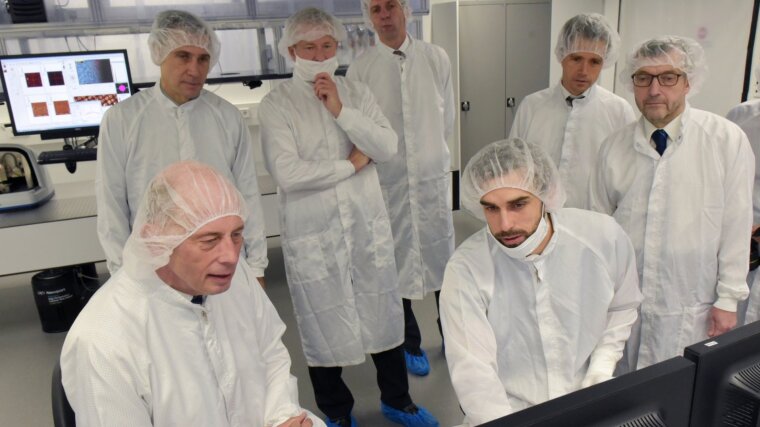
The Innovation Center for Quantum Optics and Sensors has the conceptual goal to strengthen the innovative power of the Thuringian economy in the field of quantum optics in combination with innovative sensor technologies. InQuoSens concentrates excellent and internationally visible research activities in the key technologies of quantum optics and sensor technologies at the Abbe Center of Photonics (ACP) of the Friedrich Schiller University Jena and at the Institute of Micro- and Nanotechnologies (IMN) of the Ilmenau University of Technology, and advances and augments these research activities synergistically by strategic investment measures and a joint strategy process. In addition, InQuoSens coordinates the scientific developments with the innovation needs of the Thuringian manufacturing industry. These activities create an internationally independent center of scientific excellence with a critical mass of competencies.
InQuoSens' key spheres of activity are the following:
Advancement of the Scientific Research Infrastructure
InQuoSens addresses the challenges of implementing innovations in the fields of quantum optics and sensor technologies. The first class scientific expertise of the involved partners, that covers a broad range of fields of excellence, create a solid base for this endeavor. However, in order to implement the complete scientific process chain from basic research to precompetitive collaborative research, participating institutions must be enabled to develop, test and characterize processes and components in short cycles. In order to meet this goal, InQuoSens realizes strategic investments that complement existing research infrastructures.
Prototyping Infrastructure
The preparation of micro- and nanostructured optical devices for the integration into quantum optical systems and for the quantum optical characterization requires an elaborate technological processing. Within InQuoSens, nanostructured functionalized surfaces up to atomic membrane systems are considered as particularly promising fields of technology for the realization of efficient quantum optical devices. Therefore, prototyping technologies for these material systems are highly relevant and existing coating and structuring technologies shall be supplemented by missing technology steps.
Device Characterization Infrastructure
Imaging Quantum Detectors
Quantum imaging technologies are an essential part of the InQuoSens technology roadmap. The Thuringian industry has traditionally a strong focus on imaging optical systems. These systems shall be advanced to single-photon sensitive methods and suitable quantum-optical evaluation protocols, e.g. ghost imaging techniques, shall be developed.
Quantum-Optical Characterization Setup for Mid-Infrared Spectral Region
Due to the characteristic molecular-specific optical properties of substances in the mid-infrared spectral region (MIR), sensor systems and imaging techniques in this spectral region have a high potential for research and development especially in the material and life sciences. Up to now, this potential cannot be fully exploited as technological challenges regarding spectroscopic characterization systems in this spectral region and hyperspectral imaging methods have not yet been solved completely. This holds true especially for spectroscopy and imaging on the single-photon level using quantum-mechanical correlations. InQuoSens is dedicated to this problem and will investigate quantum optical sensor and imaging systems in this spectral range.
Components for a Correlated Photon Source in the Ultraviolet Spectral Region
The spatial resolution of imaging sensors is bounded by the Abbe limit and is directly related to the wavelength of the detected photons. For this reason, there have been long standing efforts to scale existing imaging methods to shorter wavelengths. Recently, great progress has been made due to the improved availability of laser sources in the ultraviolet (UV) and extreme ultraviolet (XUV) spectral region. Yet, it has been shown that, in particular, the application of these imaging methods in the life sciences is severely hindered by the intense light-matter interaction of the high-energy photons. Even the smallest photon doses cause significant damage to biological samples. Therefore, detection methods that work with very low photon fluxes are of utmost importance, which will be addressed within InQuoSens by the development of quantum-optical sensor technologies and imaging methods in the mentioned spectral regions.
-
 FKZ:2017 IZN 0012
FKZ:2017 IZN 0012